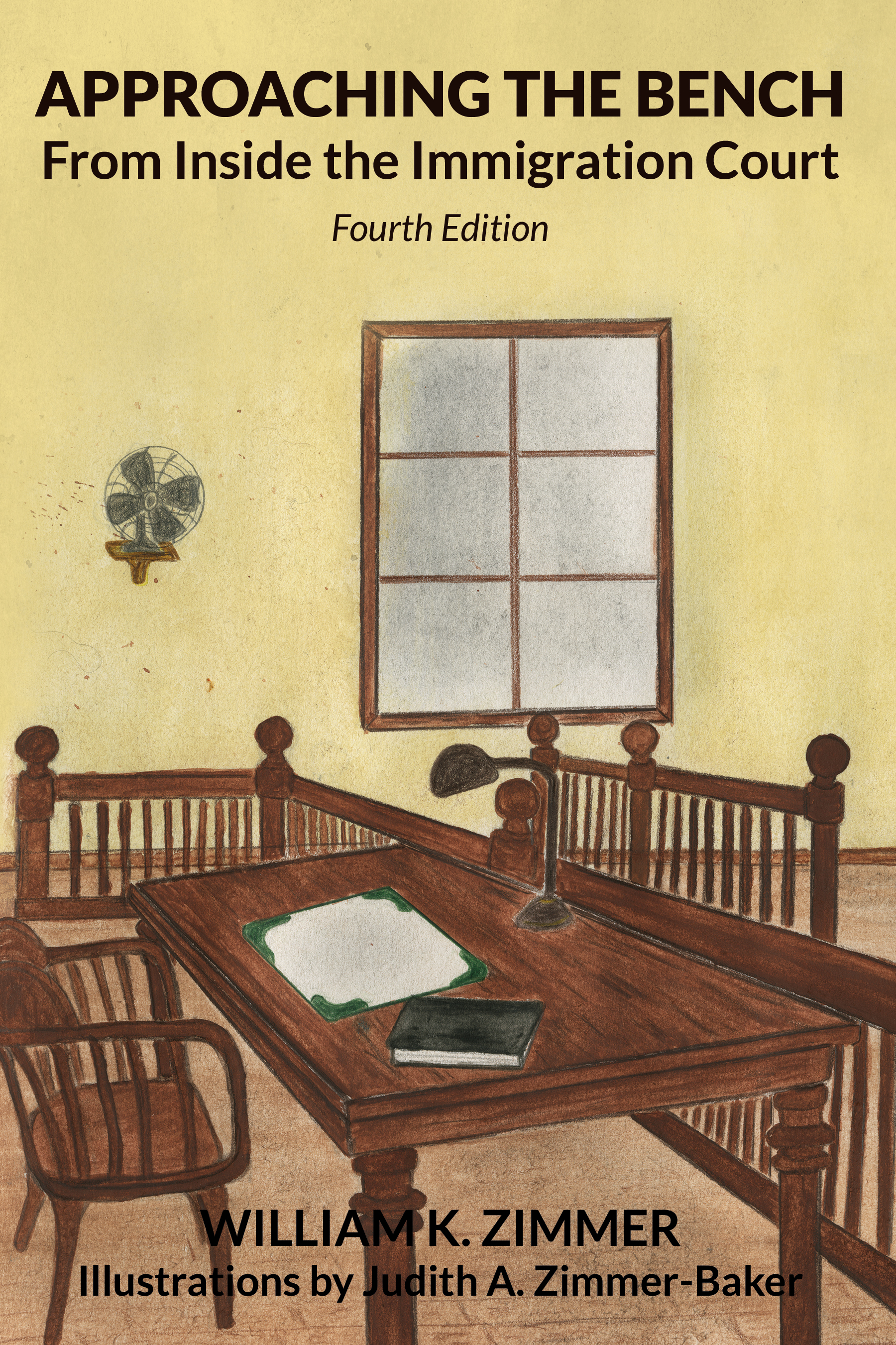Cancellation of Removal Eligibility Based Solely on Qualifying Relative Hardship Passes Constitutional Muster

The procedural history, facts of record, holding and rationale in Basilio Agustin-Matias v. Garland (September 9, 2022) No. 21-60288 are as follows:
Case History
An Immigration Judge denied the Petitioner’s application for cancellation of removal relating to non-lawful permanent residents.
Board of Immigration Appeals (BIA) dismissed the Petitioner's appeal of the Immigration Judge’s denial of his cancellation of removal application.
The Petitioner filed a petition for review of the BIA’s decision.
Facts
- The Petitioner did not assert before the Immigration Judge that his stepchildren were qualifying relatives under section 240A(b)(D) of the Immigration and Nationality Act, as amended (“the Act”). Nevertheless, the Immigration Judge noted that the Petitioner “neither provided evidence regarding the hardship to his step-children nor any evidence establishing that his step-children are either: (1) children of [Agustin-Matias’s wife]; or (2) United States citizens or lawful permanent residents.”
- The Petitioner’s wife had testified that she was both a United States citizen and the biological mother of his stepchildren, and that his stepchildren were born in the United States, making them citizens and, in turn, qualifying relatives.
- The BIA, however, reasoned in affirming the Immigration Judge’s decision that the Petitioner “d[id] not point to any record evidence, such as the children’s birth certificates or United States passports, which would show that the children in question are in fact his wife’s biological children and are United States citizens.”
Held
Petition for review DENIED
Rationale
The Petitioner asserted that:
- BIA erred by concluding that the Petitioner had failed to demonstrate that his stepchildren are United States citizens, and thus “qualifying relatives” for purposes of his cancellation of removal application.
- The BIA improperly reviewed the Immigration Judge’s findings of fact de novo (i.e. legalese meaning a new decision unaffected by a previous decision).
- The BIA’s interpretation of section 240A(b)(1(D) of the Act of limiting hardship consideration only to qualifying relatives violates the guarantee of equal protection under the Fifth Amendment the United States Constitution.
The Fifth Circuit Court of Appeal reasoned as follows:
Qualifying Relative Determination
- Factual findings are reviewed for substantial evidence and legal determinations are reviewed de novo. Lopez-Gomez v. Ashcroft, 263 F.3d 442, at 444 (5th Cir. 2001); Efe v. Ashcroft, 293 F.3d 899, at 903 (5th Cir. 2002).
- To overturn a factual finding under the substantial evidence standard, “[t]he alien must show that the evidence was so compelling that no reasonable factfinder could conclude against it.” Wang v. Holder, 569 F.3d 531, at 537 (5th Cir. 2009).
- The affidavit of the Petitioner’s mother-in-law merely states that the Petitioner is a “good stepdad,” without addressing the parentage of his stepchildren.
- Although the Petitioner’s wife’s testimony and the counselor’s report weigh against the BIA’s conclusion that the stepchildren are not “qualifying relatives,” that evidence alone does not compel a contrary conclusion. See Wang, 569 F.3d at 537.
- In other words, the Petitioner did not offer any other evidence substantiating his stepchildren’s citizenship. Therefore, he failed to “show that the evidence [of their citizenship] was so compelling that no reasonable factfinder could conclude against it.” Zhao v. Gonzales, 404 F.3d 295, at 306 (5th Cir. 2005) (citing Chun v. INS, 40 F.3d 76, at 78 (5th Cir. 1994)).
Improper Review of Immigration Judge’s Fact Finding by the BIA
- The Petitioner correctly pointed out that “the BIA cannot ‘engage in de novo review of findings of fact determined by an immigration judge.’” Alvarado de Rodriguez v. Holder, 585 F.3d 227, at 234 (5th Cir. 2009) (quoting 8 C.F.R. § 1003.1(d)(3)(i)).
- However, the BIA did not re-weigh the evidence, but merely considered the evidence proffered by the Petitioner and agreed with the Immigration Judge’s conclusion that the evidence was insufficient to establish that his stepchildren were qualifying relatives.
- Therefore, the BIA did not improperly review the Immigration Judge’s fact finding.
Equal Protection
- Rational basis review applies to the consideration of “Congress’s plenary power to pass legislation concerning the admission or exclusion of aliens.” Madriz-Alvarado v. Ashcroft, 383 F.3d 321, at 332 (5th Cir. 2004).
- “Under rational basis review, differential treatment must be upheld against [an] equal protection challenge if there is any reasonably conceivable state of facts that could provide a rational basis for the classification.” Cabral v. Holder, 632 F.3d 886, at 892 (5th Cir. 2011).
- Congress adopted hardship standard articulated in section 240A(b)(1)(D) of the Act in response to administrative decisions that weakened the former “extreme hardship” standard by permitting suspension of deportation if, for example, the alien’s child would fare less well in the alien’s country of nationality than in the United States. See H.R. Rep. 104-828, at 213 (1996) (Conf. Rep.).
- Congress determined that the interpretation underlying the trending administrative decisions relating to the former suspension of deportation provision did not conform to federal immigration law and policy, which “clearly provide that an alien parent may not derive immigration benefits through his or her child.”
- Congress’s articulated justification provides a “reasonably conceivable state of facts that could provide a rational basis” for the hardship requirement which excludes consideration of the applicant’s hardship as a threshold criteria for relief eligibility. Cabral v. Holder, 632 F.3d at 892; see Madriz-Alvarado, 383 F.3d at 332; see also Mendez-Gutierrez v. U.S. Att’y Gen., 860 F. App’x 155, 158–59 (11th Cir. 2021) (finding rational basis for the hardship requirement and concluding that “because only minimal scrutiny is given to statutory classifications of immigrants, the hardship requirement does not violate the [Fifth Amendment]”).
Commentary
The Fifth Circuit Court of Appeal, in Basilio Agustin-Matias v. Garland (September 9, 2022) No. 21-60288, held that basing threshold eligibility for cancellation of removal on the hardship of qualifying relatives, to the exclusion of the applicant’s individual hardship, passes constitutional muster.
Although section 240A(b) of the Act survived scrutiny and does not violate the principle of equal protection enshrined in the United States Constitution, this provision seems to be a significant cause for tension arising from existing law and the legally inconsequential equities of aliens who were brought to the United States at a young and tender age and have little or no connection to their native countries. These individuals are sometimes labeled as “dreamers” or potential beneficiaries of legislation often referred to as the envisioned but not enacted “Dream Act.”
Historical Perspective
Perhaps, a brief review of the history of the immigration law relating to relief based on hardship will provide more clarity and understanding.
Congress provided suspension of deportation for aliens who had entered the United States without inspection in section 19(c) of the Immigration Act of 1917.
In 1952, Congress repealed virtually all of the various and scattered pre-existing immigration laws in an effort to consolidate all laws governing immigration. In doing so, it re-enacted the 1917 provision known as suspension of deportation. See section 244(a)(1) of the Immigration and Nationality Act of 1952 (the 1952 Act).
To qualify for suspension of deportation under section 244(a)(1) of the 1952 Act, the applicant had to prove:
- the applicant had been continuously physically present in the United States for the last 7 years;
- the applicant had been a person of good moral character for the same 7 year period; and
- the applicant’s deportation would result in extreme hardship to the applicant or to the applicant’s United States citizen or lawful permanent resident spouse, parent or child.
See generally Matter of Anderson, 16 I&N Dec. 596 (BIA 1978).
In the context of an application for suspension of deportation, an applicant must demonstrate individual or cumulative factors that demonstrate “extreme hardship over and above the normal economic and social disruptions involved in deportation” to the applicant or the applicant’s qualifying relative(s) (i.e. the applicant’s United States citizen or lawful permanent resident spouse, parent or child). Matter of Pilch, 21 I&N Dec. 627 (BIA 1996).
On September 30, 1996, Congress passed the Illegal Immigration Reform and Immigrant Responsibility Act of 1996 (“IIRIRA”). This legislation substituted a relief now known as cancellation of removal for the suspension of deportation provision. See section 240A(b)(1) of the Immigration and Nationality Act, as amended (“the Act”).
To qualify for cancellation of removal, an applicant must prove that:
- the applicant has been continuously physically present in the United States for at least 10 years;
- the applicant has been a person of good moral character for 10 years;
- the applicant has not been convicted for certain criminal offenses; and
- the applicant's removal from the United States would result in exceptional and extremely unusual hardship to the applicant's United States citizen or lawful permanent resident spouse, parent, or child.
To establish exceptional and extremely unusual hardship, an applicant for cancellation of removal must demonstrate that at least one of the applicant’s qualifying relatives would suffer hardship that is substantially beyond the hardship which would ordinarily be expected to result from deportation. However, it is not necessary for the applicant to establish unconscionable hardship. See generally Matter of Monreal, 23 I&N Dec. 56 (BIA 2001).
As you can see, in 1996 Congress raised the bar for the ordinary applicant to qualify for relief by increasing the level of hardship needed to avoid removal (i.e. "exceptional and extremely unusual hardship" as opposed to "extreme hardship") and increasing the required period of physical presence (i.e. 10 years as opposed to 7 years).
Even more important, however, is that for the purpose of assessing an applicant's threshold eligibility for cancellation of removal, the Immigration Judge currently cannot consider personal hardship to the applicant for cancellation of removal, except to the extent that it indirectly causes hardship to one or more of the applicant’s qualifying relatives (i.e. United States citizen or lawful permanent resident spouse, parent, or child). Only hardship to qualifying relatives is relevant to satisfy the exceptional and extremely unusual hardship standard for cancellation of removal.
Under suspension of deportation provisions in the 1952 Act, personal hardship to the applicant for suspension of deportation can be considered. Thus, the IIRIRA 1996 amendments cut off the opportunity for potential Dream Act beneficiaries to present their personal hardship for consideration. This is an opportunity that had existed in United States immigration law at least since 1917.
Dream Act Alternative
Congress could, by slightly amending the criteria for cancellation of removal, permit Immigration Judges to consider the personal hardship of individual applicants themselves when assessing their threshold eligibility for cancellation of removal. Congress could also restore the original "extreme hardship" standard for potential Dream Act beneficiaries, as it had done for battered women and children. See section 240A(b)(2) of the Act.
Persons granted cancellation of removal would become lawful permanent residents for whom a path to citizenship already exists as it does for all lawful permanent residents (i.e. naturalization upon meeting all of the naturalization requirements).
Therefore, it does not seem necessary to provide special treatment in a new body of law for a new class of aliens to create a new path to citizenship. Also, a case-by-case approach to assessing eligibility and the exercise of discretion would better protect the interests of the United States (by ensuring that undesirable aliens are not admitted into the United States) as well as providing fundamental fairness to individual applicants.
Currently, only 4000 suspension of deportation and cancellation of removal applications in the aggregate can be granted in any fiscal year. See section 240A(e)(1) of the Act. Congress could increase the cap which had been reached before the ends of the last two fiscal years.
Another statutory modification that would benefit potential Dream Act beneficiaries would be to designate a more current entry date for aliens to qualify for registry under section 249 of the Act. Currently, registry provisions apply to aliens who entered the United States prior to January 1, 1972.
A registry applicant must establish that:
- the applicant entered the United States before January 1, 1972;
- the applicant has resided continuously in the United States since such entry;
- the applicant is a person of good moral character; and
- the applicant is not ineligible for United States citizenship, and is not subject to deportation under section 237(a)(4)(B) of the Act (terrorist activities).
Registry is a discretionary form of relief applicable to aliens for whom a record of admission for lawful permanent residence does not exist. It is not necessary for a registry applicant to prove hardship, although hardship would be relevant to the exercise of discretion.
The legislative process resulting from fine tuning existing immigration law might seem painfully slow for those who seek immediate gratification, but it would not differ from other immigration processes for legitimating immigration status; and it might not be less efficient than the process that arises from a body of new legislation.
Perhaps, dedicating more resources for a more robust and independent immigration court system and Department of Homeland Security adjudication function, and expanding jurisdiction for the latter would hasten the pace of adjudications. For example, the former INS was given jurisdiction to adjudicate suspension of deportation applications under the Nicaraguan and Central American Relief Act. See Pub. L. No. 105-100, tit. II, 111 Stat. 2193, 2196 (1997), amended by Pub. L. No. 105-139, 111 Stat. 2644 (1997); 8 C.F.R. § 1240.62(a).
Perhaps, a simpler and more expedient remedy for a flat tire is to repair or replace the tire, rather than buy a new car.

